The field of art education is often overlooked as a viable career in most school counseling offices. Many college students aren’t even aware that the profession exists. Today’s guest, Kelsi Quicksall declared Communications as her major until a quiet suggestion from a loved one opened up a world of possibilities.
Now into her second year teaching art, Kelsi has a passion for teaching, a love and connection to her students and a strong following on Instagram.
She absolutely radiates positivity!
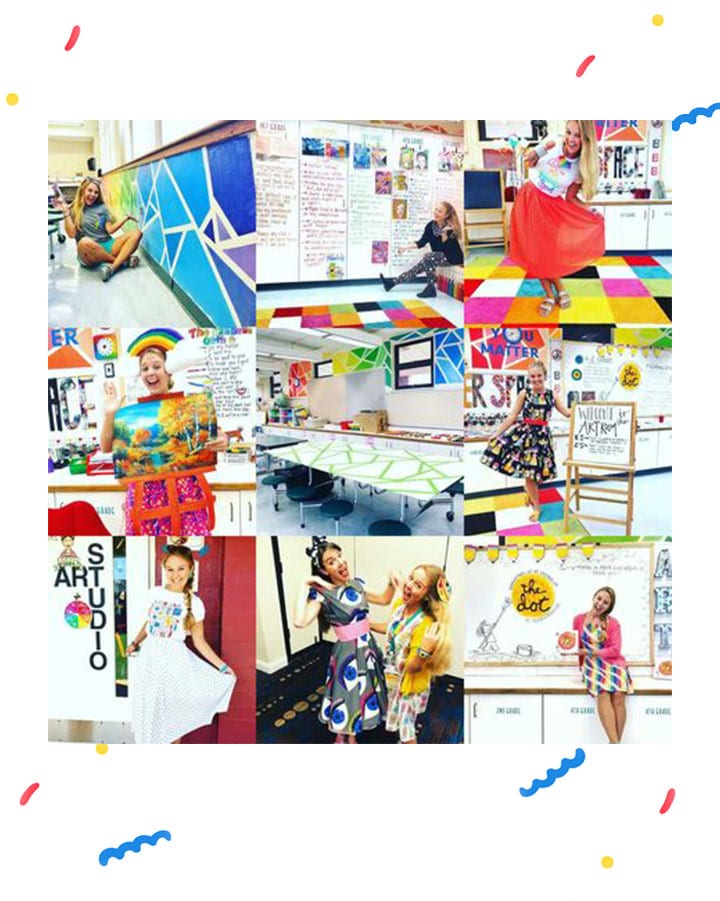
Get to know Kelsi Quicksall!
1. Can you share how you got started as an art teacher?
It took me entirely too long to realize that teaching art was a viable career option, and a super rewarding one! I always loved art and school. I considered myself an artist, took all of the art classes in high school… but for some reason, it wasn’t portrayed to me as a realistic career.
It wasn’t until I found myself feeling out of place in my first major in college (Journalism) that I stumbled upon Art Education. Quite literally, too- I was in the car with my boyfriend at the time (now fiancé) after class, rambling about how I didn’t know what I wanted to do with my future. He looked at me and my crazy outfit and said, “You know who you remind me of? Me elementary art teacher. You even dress like her. You ARE an art teacher!”
After than, I made the switch to study Art Education and it all clicked. I graduated with a minor in Mass Communications (having started college in Journalism) and still enjoy media and writing, but mainly sharing on social media!
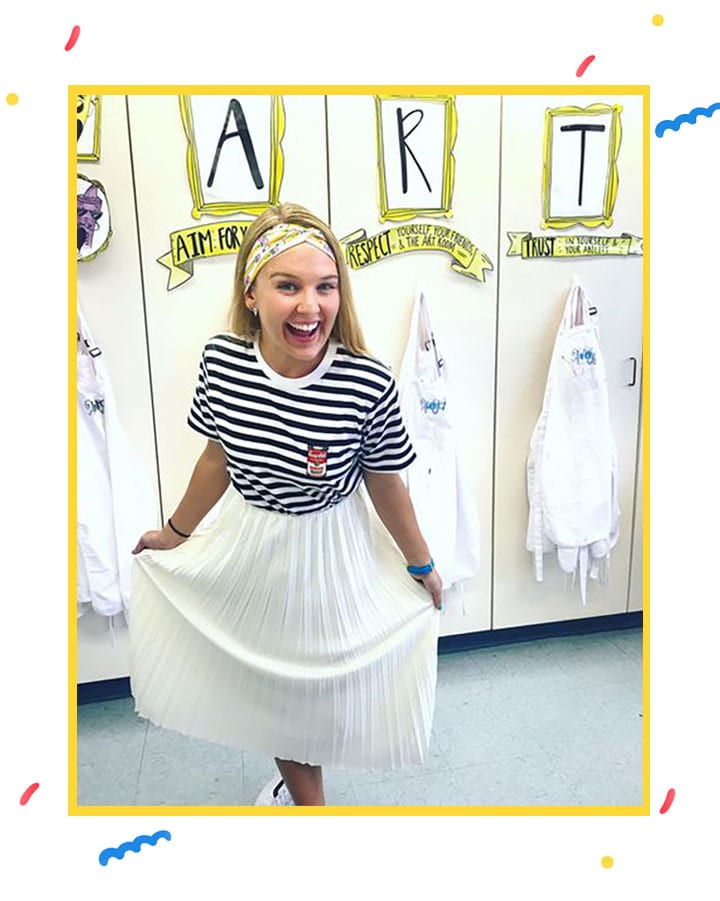
2. What do you feel is your best attribute or strength as an art teacher?
My best attribute also is my worst… I have high expectations and goals for myself and my students, but I’m also a procrastinator. As a result of both, I work extremely hard at the last minute to put things together that meet my expectations. I hold my students to high expectations as well, and they create amazing work as a result! The downside of my “attribute”? Lack of time for anything else like eating, breathing, sleeping… just kidding, kind of.
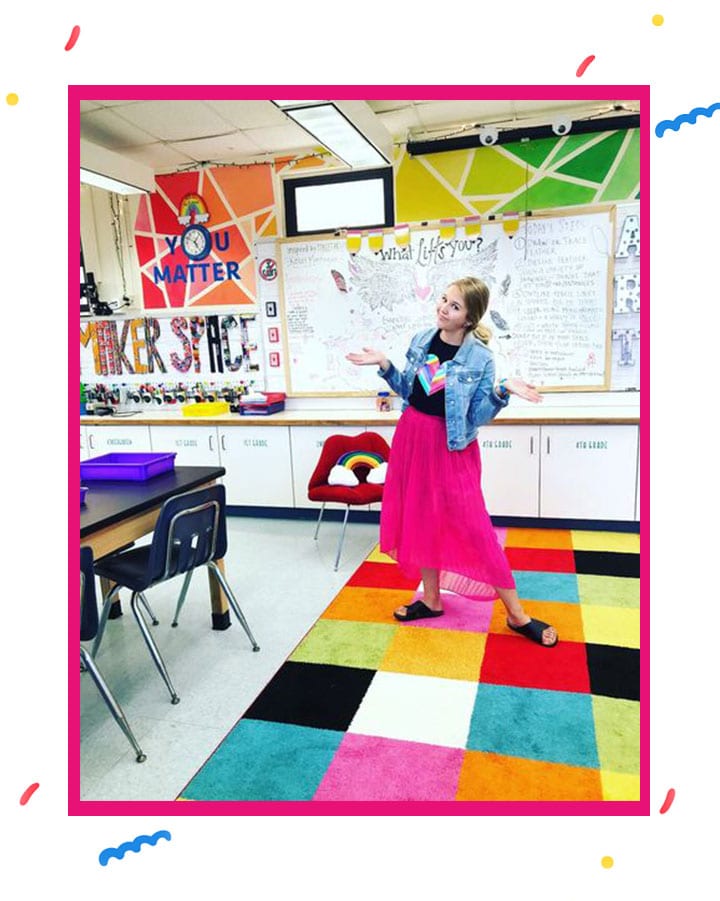
3. What do you do well in the art room and how does this benefit your students?
Get silly! I have been told I have a ton of energy. With minimal amounts of sleep, I don’t feel like this is true, but I guess the coffee is doing it’s thing. I find that when I am super enthusiastic and excited about something (a “new” art media, artist, technique, project, art show, etc) that energy is transferred to my students. I thrive off of their feedback.
I use a microphone to enhance engagement- most would think it’s for my students, but it’s also for me. I love using that thing. I’ve been asked why I don’t just use a hands free mic set (often provided by schools), and the answer is because I love holding the microphone and taking the “stage”. I even have a second microphone for students- they are more likely to want to share with the mic! It really enhances engagement when we’re analyzing artwork, sharing what they see/think/feel/wonder, or just what we’ve learned.
If I notice that they’re not excited, I know I need to make changes. If I ever feel like I’m “losing them”, I immediately go for silly. Silly accents, songs, and call and responses really work for my students. As the great art educator Cassie Stephens always says, “silly sticks.” It’s so true!
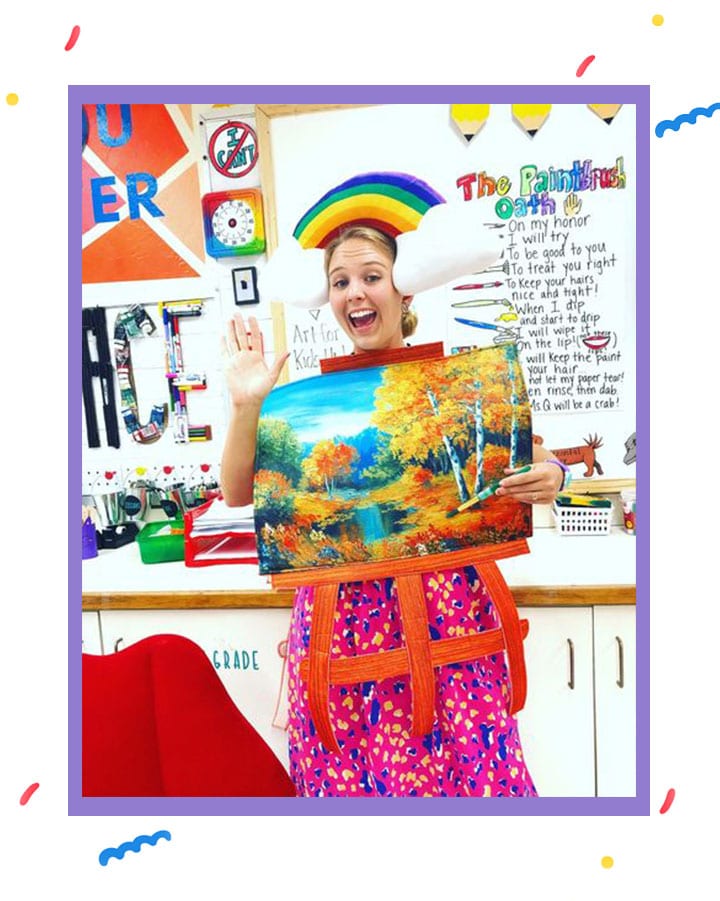
4. Why do you feel teaching art to kids is important?
Teaching art is so rewarding for both parties- my students and myself. Teaching is one of the most under-appreciated and underpaid professions, but that’s not the challenge. The challenge is in the way teachers think and the time we spend thinking. Educators cannot simply “turn off” their brain. I now think of everything in life as a potential lesson, an art project, or teachable moment.
That being said, teachers work hard. Countless unpaid hours planning lessons, money spent out of pocket on supplies, classroom improvements, rewards for kids… the list goes on.
But I sincerely enjoy doing it and wouldn’t want to do anything else. I’d keep teaching art even if I won the lottery! It’s purely our of passion. I feel the most alive when I’m creating art, and a sense of purpose when I share my passion with children. The simplest things are the most rewarding, like watching a 5 year old mix yellow and blue to be overjoyed in discovering that it creates green. Pure magic.
Aiding students in achieving their artistic visions and seeing their pride in their work is priceless. The arts are crucial for children to develop problem-solving, communication, and collaborative skills; and teaches motor skills, inventiveness, cross curricular engagement, history, art history, and culture. I feel like those are all obvious things to art teacher listeners out there, but it’s crazy that many teachers, administrators and parents aren’t aware of the benefits. In such a digital generation, teaching these skills early on it’s vital to their future success.
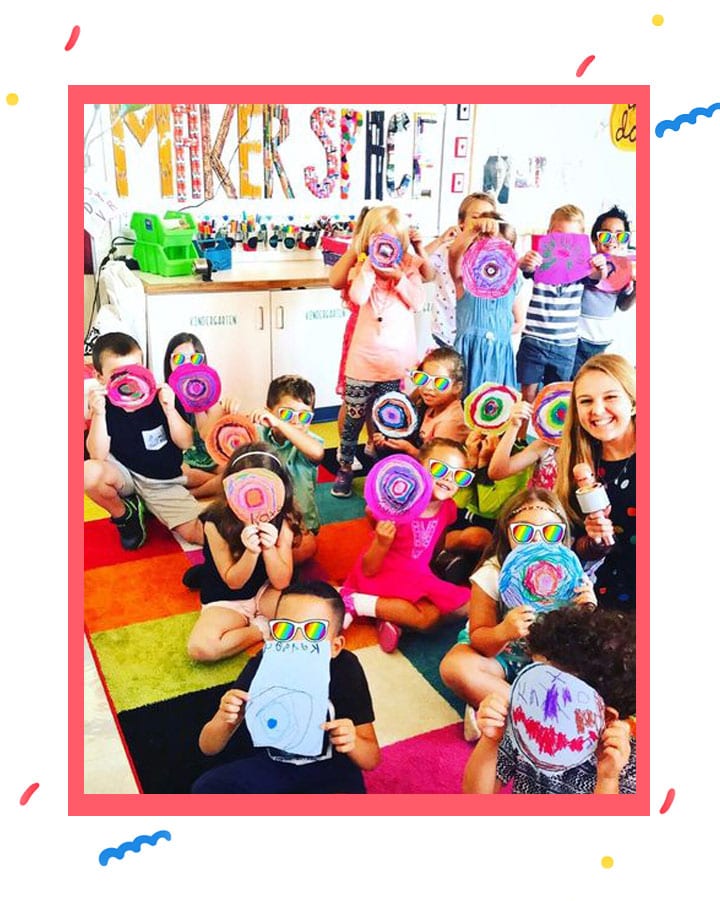
5. What advise would you give a new teacher?
I’ve been staking art teachings on social media since my first year in college, including Deep Space Sparkle! My first year, I commuted an hour each way to my school. I lived for podcasts like Art Made Easy and binge listened on my commute! I am so lucky to have started my teaching career at a time when so many art teachers are sharing their lessons and expertise on social media/blogs. Before I started teaching, I dove in. I listened to every podcast. Read every book. Every blog. Every Instagram post I could possibly find that would help me! I think my own drive to find these resources has really benefited and shaped me as an art educator.
I owe my success so far to the great teachers who take the time to share! The world of art education can be lonely when you are the only art teacher at your school. Instagram has particularly been a beneficial resource and community for me, especially through my first couple years of teaching. I have befriended a community of amazingly talented and experienced art teachers who love teaching and also love teaching others about teaching as much as I do! Share something you love.
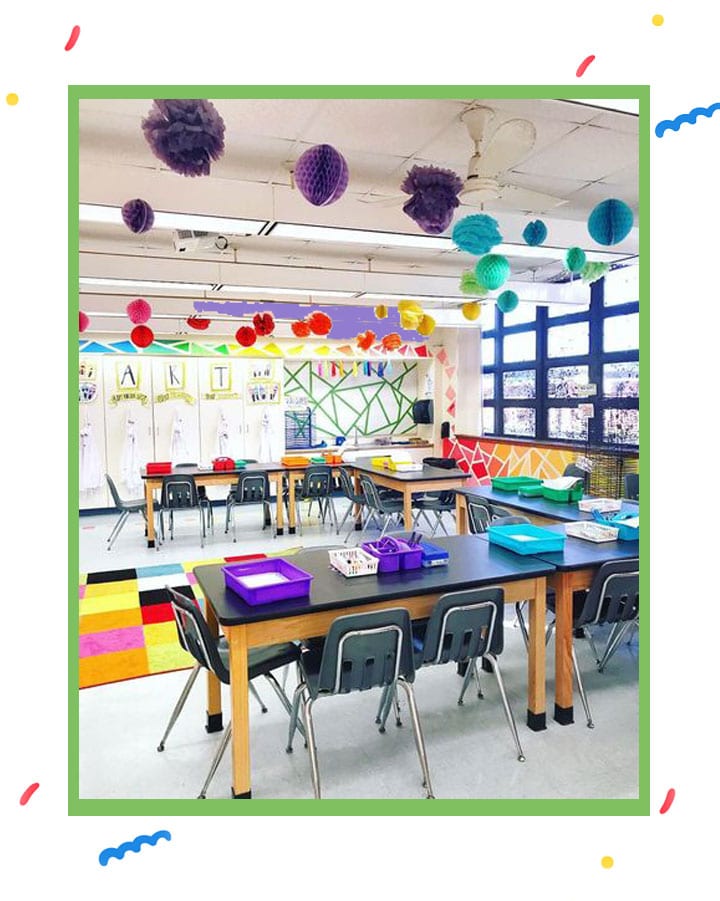
WHAT YOU’LL LEARN:
– How Kelsi transitioned from a journalism major to an elementary school art teacher
– What Kelsi does to start each day with her children and the one tool that “sets the stage to engage”
– How Kelsi uses a low-pressure beginning of the year project to build engagement with her students
– The best advice to give someone struggling in their classroom
– How art can bring back important skills that children need to develop
– What is one of Kelsi’s hidden talents and favorite resources for personal development
LISTEN TO THE SHOW
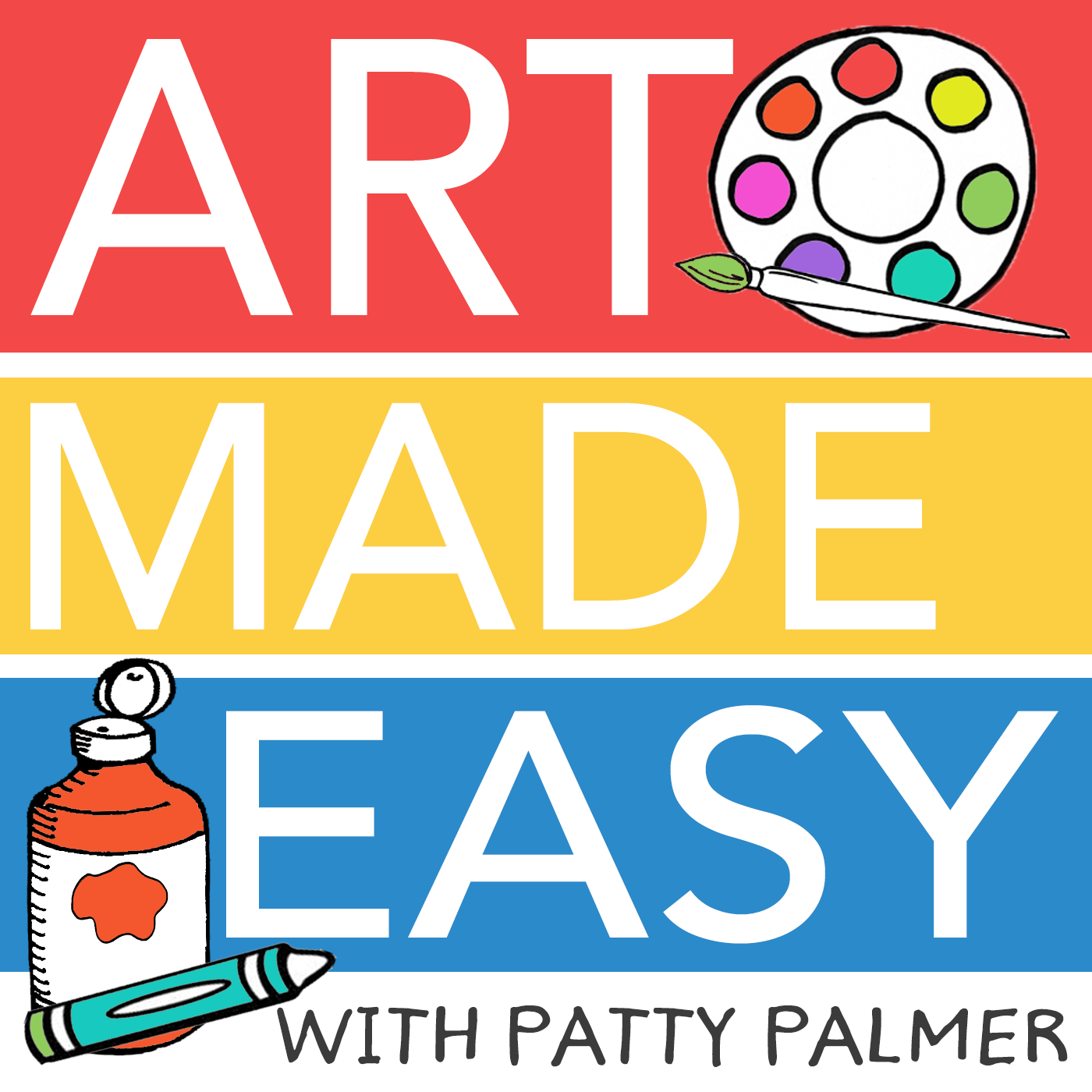
My best advice for teaching art to kids.
The field of art education is often overlooked as a viable career in most school counseling offices. Many college students aren’t even aware that the profession exists. Today’s guest, Kelsi Quicksall declared Communications as her major until a quiet suggestion from a loved one opened up a world of possibilities.
Now into her second year teaching art, Kelsi has a passion for teaching, a love and connection to her students and a strong following on Instagram.
She absolutely radiates positivity!
Get to know Kelsi Quicksall!
1. Can you share how you got started as an art teacher?
It took me entirely too long to realize that teaching art was a viable career option, and a super rewarding one! I always loved art and school. I considered myself an artist, took all of the art classes in high school… but for some reason, it wasn’t portrayed to me as a realistic career.
It wasn’t until I found myself feeling out of place in my first major in college (Journalism) that I stumbled upon Art Education. Quite literally, too- I was in the car with my boyfriend at the time (now fiancé) after class, rambling about how I didn’t know what I wanted to do with my future. He looked at me and my crazy outfit and said, “You know who you remind me of? Me elementary art teacher. You even dress like her. You ARE an art teacher!”
After than, I made the switch to study Art Education and it all clicked. I graduated with a minor in Mass Communications (having started college in Journalism) and still enjoy media and writing, but mainly sharing on social media!
2. What do you feel is your best attribute or strength as an art teacher?
My best attribute also is my worst… I have high expectations and goals for myself and my students, but I’m also a procrastinator. As a result of both, I work extremely hard at the last minute to put things together that meet my expectations. I hold my students to high expectations as well, and they create amazing work as a result! The downside of my “attribute”? Lack of time for anything else like eating, breathing, sleeping… just kidding, kind of.
3. What do you do well in the art room and how does this benefit your students?
Get silly! I have been told I have a ton of energy. With minimal amounts of sleep, I don’t feel like this is true, but I guess the coffee is doing it’s thing. I find that when I am super enthusiastic and excited about something (a “new” art media, artist, technique, project, art show, etc) that energy is transferred to my students. I thrive off of their feedback.
I use a microphone to enhance engagement- most would think it’s for my students, but it’s also for me. I love using that thing. I’ve been asked why I don’t just use a hands free mic set (often provided by schools), and the answer is because I love holding the microphone and taking the “stage”. I even have a second microphone for students- they are more likely to want to share with the mic! It really enhances engagement when we’re analyzing artwork, sharing what they see/think/feel/wonder, or just what we’ve learned.
If I notice that they’re not excited, I know I need to make changes. If I ever feel like I’m “losing them”, I immediately go for silly. Silly accents, songs, and call and responses really work for my students. As the great art educator Cassie Stephens always says, “silly sticks.” It’s so true!
4. Why do you feel teaching art to kids is important?
Teaching art is so rewarding for both parties- my students and myself. Teaching is one of the most under-appreciated and underpaid professions, but that’s not the challenge. The challenge is in the way teachers think and the time we spend thinking. Educators cannot simply “turn off” their brain. I now think of everything in life as a potential lesson, an art project, or teachable moment.
That being said, teachers work hard. Countless unpaid hours planning lessons, money spent out of pocket on supplies,



LINKS & RESOURCES
Check out Kelsi Quicksall’s Instagram and her Sumi-e Ink dresses made by her students!
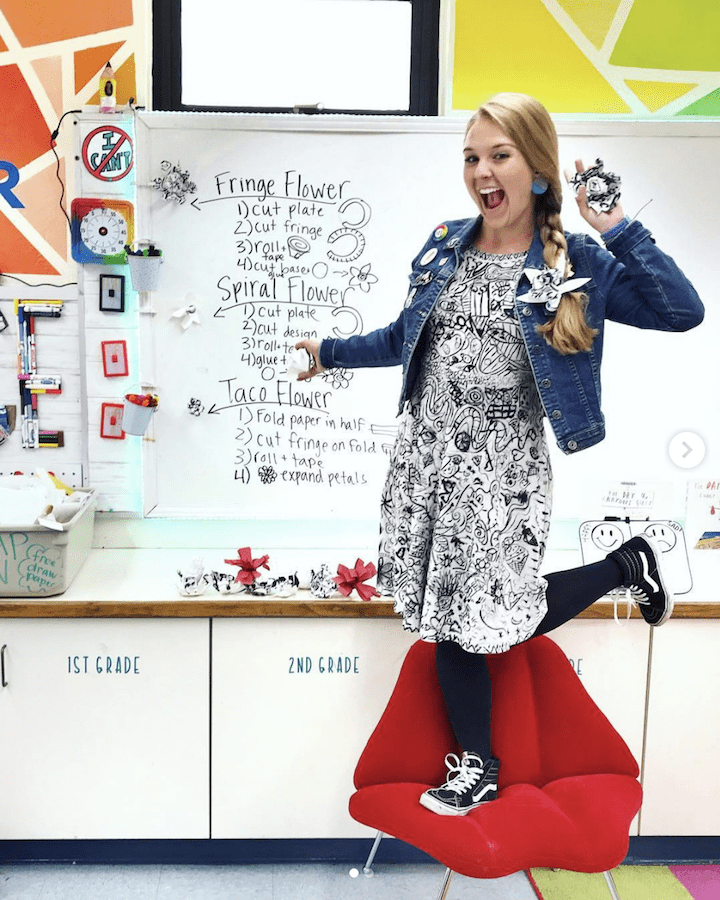
Kelsi’s favorite teacher tip, using a Wireless Handheld Microphone
Kelsi also recommends this microphone http://Wireless Handheld Microphone
School Arts Digital (Dec 2018 issue, pg 30-31)
Join the Sparkler’s Membership Waitlist HERE
You can visit Patty through Deep Space Sparkle on Facebook and Instagram
Patty Palmer At Home Instagram
Join the Sparklers Club waitlist HERE
support@deepspacesparkle.com

My best advice for teaching art to kids.
Yes, the day has come!
After a long time deciding if, I finally said when.
Thank you SO much for your encouragement, show suggestions and help getting Art Made Easy off the ground.
Many of you were so pumped about this show but confessed that you had no idea what a podcast was. I love you guys for your unbridled enthusiasm.
Here’s a quick definition of a podcast & what to expect from Art Made Easy:
A podcast is a free radio show. The host (me!) interviews guests or talks about a favorite subject. You get to listen through your computer, laptop or smart phone. I like to listen to my favorite podcasts in my car during long travel days or on my walks via set of ear buds and my iPhone.
You can subscribe to the show via iTunes and Stitcher radio. The benefit is that your free podcast ap on your iPhone will automatically be updated with all the podcast episodes from any show you subscribe to.
Go ahead and give it a try!
To listen on your laptop or computer, just click the play button in the colored box below.
To listen via iTunes, click on the “play in iTunes” banner and click subscribe.
And now onto the show…
For my first show, I wanted to tell you my story of how I became an art teacher. We all have different paths and this one is mine. I’ll share advice to those who are just starting out as an art teacher and some of my best tips for teaching art to kids.
This episode is for anyone who thinks they may not have the qualifications to be an art teacher. Teaching art to kids doesn’t have to happen inside a classroom. You can teach art at home, at a summer camp and even as a volunteer (like I did).
If you are an art teacher just beginning your journey, I’m sharing my best advice to get you through that tough first year. Download my free handout and keep it in your teacher planner and refer to it when you have a tough day.
LISTEN TO THE SHOW
SHOW NOTES:
Drawing With Children: A Creative Method for Adult Beginners, Too
Art Lab for Kids: 52 Creative Adventures in Drawing, Painting, Printmaking, Paper, and Mixed Media-For Budding Artists of All Ages (Lab Series)
National Art Convention
CreativeLive- free online classes
Art Teachers Facebook Group
Website: Painted Paper in the Art Room (Laura Lohmann)
Website: Art of Education
Book: Classroom Management for Art, Music, and PE Teachers
PS – Please leave a review on iTunes!
Art Made Easy is now live on iTunes! Subscribing to the show and leaving an honest review really helps the show gain visibility and allows me to tailor the show to your needs.


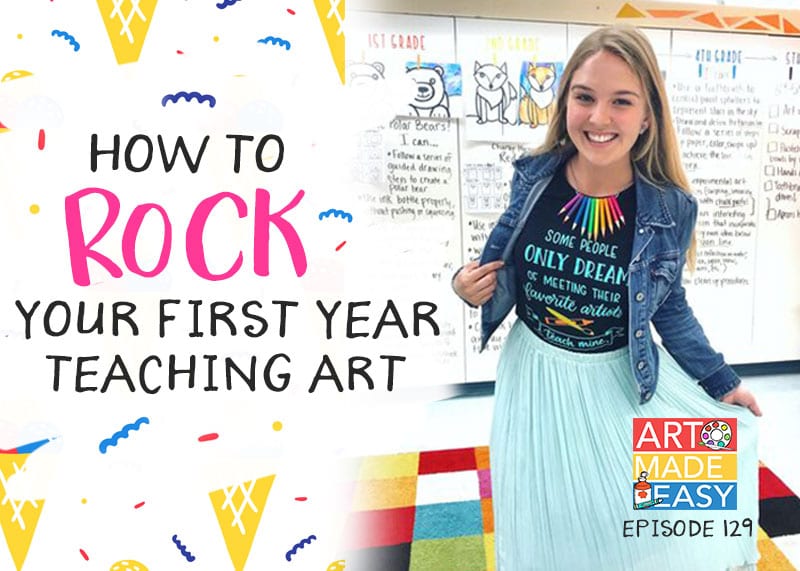











Great podcast! I binge listen to Art Nade Easy in the car too!